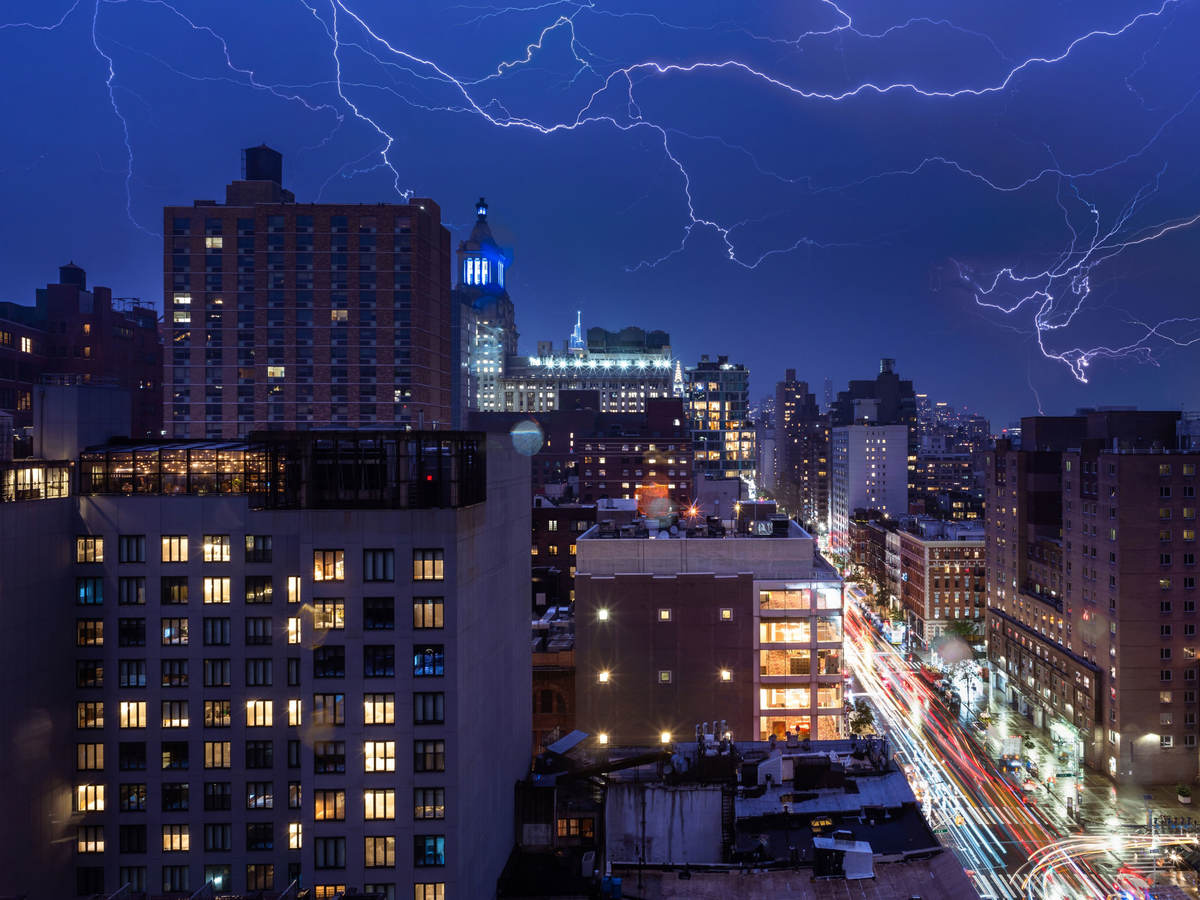Lightning is one of the most powerful forces of nature, capable of immense damage. A single bolt can reach 30,000°C, which is hotter than the sun’s surface. Also, it may carry hundreds of millions of volts. With such extreme energies, lightning strikes can easily damage buildings, harm inhabitants, and cause fires. That is why having professional lightning protection services is crucial. Yes, especially for structures in the UK’s lightning-prone regions.
Understanding Lightning’s Destructive Powers
To appreciate the value of lightning protection, consider the scale of damage lightning inflicts in the UK. Studies indicate around 30,000 thunderstorms occur over the British Isles annually. Furthermore, the UK averages 300,000 lightning strikes per year. Out of these, lightning has caused around 5 deaths and 30 injuries annually in the last decade, as per “Met Office data.”
Beyond life threats, lightning also leads to structural damage, electrical surges, wildfires, and massive economic costs. Lightning strikes to buildings can severely damage electrical systems and electronics through immense power surges. Do you know what? The high temperatures can shatter brick and concrete.
Moreover, estimates indicate £5-10 million is the annual economic loss in the UK due to lighting. This is why every structure requires properly installed lightning protection in the UK according to BS EN 62305 standards.
What is Lightning Conductor in the UK?
The core purpose of any lightning safeguarding system is to intercept the high voltage lightning bolt when it strikes a structure and provide a conductive path into the earth. This function is fulfilled by installing specialized devices called lightning conductors, also referred to as lightning rods.
Lightning conductors consist of pointed rods mounted on the highest points of the structure. Further, the rods act as receptors. It captures the enormous electrical discharges when lightning hits.
Design Factors for Lightning Conductor Systems
Several key factors determine the design of an effective lightning conductor system according to BS EN 62305:
Material Choices:
Materials with high electrical conductivity, such as copper and aluminum, are favored for their ability to channel lightning strikes. Moreover, they offer excellent corrosion resistance, ensuring the system’s:
- Durability
- Long-term functionality
Conductor Sizing:
The size of the conductors plays a pivotal role in system design. Opting for larger-diameter conductors is paramount to:
- Facilitate the safe passage of high amperage
- Manage the thermal load generated by a lightning strike
Certainly, sizing criteria often adhere to country-specific norms, like those set forth in the UK.
Connection Strategies:
Further, the interconnection of conductors is of great importance. Bonding between adjacent conductors guarantees uninterrupted current flow, reducing the risk of arcing and side flashes. After all, they could compromise system performance.
Conductor Angle:
Adhering to the 45° downward angle rule is a fundamental safety measure. Beyond these standard considerations, the design of a lightning conductor system should be adapted to:
- Local conditions
- Specific requirements
Factors such as soil conductivity, the structural characteristics of the building, and the desired level of lightning protection are all integral to the system’s overall effectiveness. In recent years, advancements in lightning protection technology have led to innovative solutions. This includes early streamer emission (ESE) systems, which can extend the protection zone.
Additionally, the integration of lightning monitoring and detection systems has become increasingly important for promising the timely activation of lightning protection measures.
Lightning Conductor Testing Near You
After the installation of a new system, testing of the lightning conductors is crucial before the building’s use. Additionally, the parameters examined are:
- Continuity Testing:
Methods:
Several techniques can be employed to test continuity. One common method is to use a low-resistance ohmmeter to measure the resistance along the conductor system. Also, a successful test will show minimal resistance across the entire length.
Importance:
A lack of continuity can result in inefficient lightning dissipation and increased risk to the building. This examination:
- Makes sure that the entire system is properly interconnected
- Can carry the lightning current safely to the ground
- Resistance Measurements:
Methods:
Using specialized equipment, the resistance of each lightning conductor is measured. The resistance should comply with industry standards to ensure lightning protection.
Importance:
Proper conductor resistance is crucial for the effective dissipation of lightning energy. High resistance can lead to arcing and damage to the building, while low resistance may indicate a short circuit. This could disrupt the lightning protection system.
- Visual Inspection:
Methods:
Inspectors visually explore the entire system, from the conductors and connections to the mounting points on the building. They also check for any potential structural issues affecting the system’s performance.
Importance:
Additionally, a visual inspection helps identify immediate concerns and potential long-term issues. Corrosion and damage can compromise the system’s goodness and must be addressed promptly to maintain its performance.
- Surge Protection:
Methods:
Surge protective devices are assessed for their ability to divert surges. Moreover, this can involve testing the response time, voltage clamping, and capacity of the surge protectors.
Importance:
Adequate surge protection is essential to prevent damage to sensitive electronic equipment and reduce downtime. Testing confirms that these devices are in working order and provide the necessary protection.
Selecting Qualified Lightning Protection Contractors
Given the risks, building owners should hire experienced, certified lightning protection contractors for consultancy, installation, and inspection. Further, reputed specialists adhere to BS EN 62305 standards covering materials, installation methodology, and testing.
When selecting contractors, key factors to assess include:
- Certified Master Installer credentials, such as UL96 and LPI 175, are essential qualifications for supervising electricians. Hiring one with a strong track record in installing similar projects in the UK, encompassing corporate offices, residential complexes, and industrial facilities, is vital.
- Furthermore, advanced installation practices should be in place, enabling the discreet integration of conductor networks across various structures. The availability of testing equipment like digital micro-ohmmeters is necessary to conduct comprehensive system inspections.
- Also, a robust reporting system should be established to document inspection results and confirm compliance with your requirements. It is meaningful to ask the team about the preventive maintenance options. Moreover, make sure the periodic validation of system health and electrical parameters is there for you.
Conclusion
Lightning protection systems are crucial for structures vulnerable to thunderstorms in the UK. Although the protection systems demand considerable installation and testing costs, they avert immense life and property losses from lightning.
South West Lightning Protection is among the best lightning protection companies that offer the best protection system against lightning. We are here with premium services in an affordable range!





